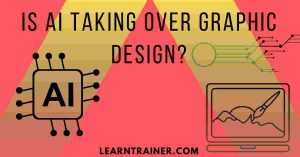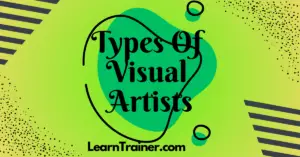Salary Insights and Market Demand
According to 2021 BLS data, graphic designers earned a median annual salary of ~$50,700. The top 10 percent of designers pulled in more than $98,000 yearly, showcasing the potential for rewarding earnings in the field.
| Rank | Industry | Median Salary |
|---|---|---|
| 1 | Specialized Design Services | > $58,600 |
| 2 | Advertising and PR | > $52,000 |
| 3 | Newspapers or Magazines | > $44,500 |
Beyond broad salary data, the field also offers lucrative opportunities depending on experience and specialization areas.
Experience and Skill Impact on Earnings
As experience accumulates and portfolios grow richer, skilled graphic designers may expect to ascend the pay ladder:
- Entry-Level: Close to $40,000
- Mid-Career (5–10 years): $50,000–$65,000
- Senior-Level (10+ years): Clocking in at or above $75,000
Market Demand and Job Growth Prospects
The demand for graphic designers mirrors technological and digital advances. The BLS projects a growth rate of 3% in graphic design positions from 2021 to 2031, specifically highlighting a surge for those adept in digital skills such as user experience (UX) and user interface (UI) design.
Web developers and digital designers see more promising prospects, with annual median salaries of ~$78,300 and top performers earning over $168,000.1 Developing skills in digital fields provides a lucrative edge.
Sector-Specific Growth
Different sectors exhibit varied demands and pay rates for graphic designers. The highest growth sectors:
- Tech Industry: UX/UI design increases comfort and usability.
- E-commerce: Merchandising websites and app interfaces.
- Marketing Firms: Crafting compelling visuals for digital campaigns.
Technological evolution fuels this growing need for competent digital design experts.
Freelance Opportunities
Freelance graphic designing often appears as another venture for diversifying income opportunities or even a main revenue channel. Salaries on platforms like Upwork and Fiverr range broadly, from about $18 to $66 per hour, reflecting skill levels and market positioning.
Strategies like creating templates for repeat sales or teaching design on sites like Udemy emerge as viable income increments. Proper branding and displaying a polished portfolio amplify earning potentials in freelancing gigs.
Maximizing Income as a Graphic Designer
Maximizing your income potential as a graphic designer involves both strategic navigation through existing roles and bold leaps into new avenues. Below are a few structured strategies to help you boost your earnings effectively.
Asking for a raise isn’t always the easiest of tasks, yet it is among the most straightforward ways to increase your income. You need to approach this conversation from your employer’s perspective. Emphasize the quality of work you deliver and demonstrate how you’ve contributed to the company’s successes. It helps to frame this request in conjunction with your ambition to take on more responsibilities.
Transitioning to freelance work offers another significant income opportunity. Freelancing full-time can afford a level of freedom and the potential for higher earnings. However, it requires effective scheduling and marketing acumen. Implementing a comprehensive portfolio displayed on sites like Upwork and Fiverr can illustrate your capabilities and attract clients willing to pay higher rates.
Understanding your true worth is vital. Look into salary surveys and job boards relevant to your specialty. Knowing precisely how much other graphic designers earn with comparable skills in similar industries can improve your pricing strategies.
Expanding your skill set also offers a practical route to substantially boosting your income. Diversifying skills to cover trending fields such as 3D design, UI/UX design, or animation can command higher paychecks. Offering comprehensive solutions encompassing branding, website design, and social media management widens your client base and enhances your fee structures across different projects.
In the milieu of freelance work, raising your rates appropriately over time is another linchpin strategy. Start by auditing your current workload and seeing where you may be undercharging. Introduce incrementing rates strategically, providing existing clients with reasonable notice periods and clear justifications for higher charges.
Building a strong network of industry contacts can provide both short-term clients and long-term referrals. Regularly attend workshops, industry conferences, or even informal creative meetups to exchange ideas and collect business cards. Connectivity within your local or online communities can pave the way for referring high-value projects and striking collaborative ventures.
Combining traditional job stability factors with strategic freelancing initiatives, continuous skill enhancement, and assertive self-marketing can significantly maximize your income as a graphic designer.
Lucrative Side Hustles
Diversifying into side hustles can be a great way for graphic designers to bolster their earnings through creative and technological output. Many designers harness their skills, lending themselves to hot-market demand and producing impressive revenue streams.
Creating and selling templates remains one of the smartest additions to your side hustle portfolio. Digital templates for websites, social media posts, presentations, or other printable resources can recurrently sell over time, translating initial work into ongoing income. Websites such as Etsy, Creative Market, and Design Bundles are ideal for starting.
Embarking on freelance graphic design provides income potential and flexibility. Leveraging websites like Upwork, Fiverr, and Freelancer.com allows you to target diverse markets and set your own rates based on comprehensive portfolios. Establishing your skills robustly across your profiles ensures potential employers understand your value and contribution potential immediately.
Turning creative expertise into monetary gains is feasible by creating and selling fonts and graphic assets. Font design specifics lend themselves to specialized sites like Creative Market or My Fonts. Engaging in such venues amplifies distribution and fortifies niche recognition within the design community.
For those harboring a passion for imparting knowledge, teaching graphic design presents another lucrative avenue. In today’s digital era, platforms such as Udemy and Skillshare have surged in popularity for e-learning. Designing interactive classes will stand out, prompting more beginners and intermediates to seek out your expertise.
Establishing a YouTube channel dedicated to design tutorials might suit you well if you’re into dynamic content generation. You can educate budding designers on manipulating popular design software, or tackle visually complex problems into simple, digestible insights catering to the learning speeds and interests of your audience.
Launching a graphic design blog supplemented with affiliate marketing integrates passion with passive income. Utilize a platform such as WordPress or Medium to curate engaging posts covering advanced design topics, tool tutorials, or reviewing popular design software. Implement affiliate marketing strategies with links to tools and resources pertinent to graphic design enthusiasts—boosting commission while providing genuine value.
For illustrators and those inclined towards art, platforms like Redbubble, Society6, and INPRNT offer the chance to monetize artwork by putting it onto products. Creating deals for client-requested illustrations while broadening your own art pieces’ commercial reach generates revenue across targeted collectors.
Web design stands equally remarkable for those combining coding proficiency with artistic ability. Developing full functional websites or specialized interdisciplinary roles can also enhance engaged designers’ market demands.Explore related platforms:
- Upwork
- Fiverr
- Creative Market
- Udemy
- Skillshare
By integrating these creative side hustle pathways with your unique professional talent, you’ll have the opportunity to earn notable income while still following your primary passion and commitment to creativity.
Building a Strong Portfolio
A strong portfolio is crucial in establishing yourself as a high-caliber graphic designer. It serves as a visual resume that provides potential clients with tangible evidence of your abilities, positioning you for higher-paying opportunities and prestigious projects.
To attract top-tier clients, your portfolio must showcase your work and demonstrate your creative problem-solving skills and the value you bring to projects. Begin by assembling a diverse array of work that reflects your versatility across different styles, mediums, and industries. Include completed projects and highlight the various challenges you’ve tackled, from logo designs to full-scale digital marketing campaigns.
Elevate your portfolio’s impact by including case studies that detail each project’s objectives, challenges, and your strategic solutions. Explaining your design process helps potential clients understand your thought process and sets you apart as a thoughtful and intelligent designer.
Enhance your credibility by incorporating testimonials and client feedback. Request written feedback from satisfied clients to highlight your skills, work ethic, and ability to meet deadlines. These third-party validations are particularly persuasive in demonstrating your work quality and reliability.
Effectively present your portfolio online through platforms like Behance, Dribbble, and your personal website. Each platform caters to different audiences, so tailor your content accordingly. Ensure your personal website provides a polished, user-friendly interface for potential clients to navigate your work easily. Include your contact information and consider adding a blog or news section to showcase recent projects and industry insights, further establishing your expertise.
Design your online portfolio with attention to aesthetic detail, aligning with your target clients. Utilize high-quality images, minimalist layouts, seamless navigation, and mobile optimization to engage viewers effectively. Organize projects into categories and consider incorporating search functionality for easy navigation.
Showcase projects with varying budgets to demonstrate your flexibility and adaptability to different client needs. Mix high-impact projects with simpler designs to reflect your full design scope, and include personal projects to humanize your brand and show your passion and innovation beyond client commissions.
Regularly update your portfolio to stay relevant in the rapidly evolving graphic design industry. Insert recent works and discard outdated projects to demonstrate your ongoing development and keep you competitive in the job market.
A compelling portfolio should highlight your past work and provide a promise of future performance to potential clients. By delivering a powerful mix of diversified works, methodical case studies, and validated client testimonials, you ensure that higher-paying clients readily recognize your value and are keen to engage your services.
Education and Skills Required
Pursuing a career in graphic design requires a combination of technical skills, software knowledge, and personal attributes. The field demands a thorough understanding of various design tools and continuous learning to stay updated with industry trends.
Begin with a strong educational foundation, such as a bachelor’s degree in graphic design or a related discipline like visual communications or digital media design. Formal education provides structured learning in typography, color theory, layout techniques, and visual concept development. Accreditations from recognized institutions or programs, such as those accredited by the National Association of Schools of Art and Design (NASAD), add significant value to an emerging designer’s profile.
Technical proficiency in popular design software is essential. Familiarity with the Adobe Creative Suite, particularly Illustrator, Photoshop, and InDesign, is often a baseline requirement. For web design or motion graphics, expertise in software like Adobe XD, Sketch, Figma, or After Effects can provide a significant advantage.
Knowledge of user experience (UX) and user interface (UI) design principles is increasingly valuable in today’s digitally-driven market. Understanding these fields allows designers to enhance the usability and visual appeal of websites, apps, and other digital platforms.
While not mandatory for all graphic design roles, coding skills in HTML, CSS, and JavaScript are highly beneficial. They enable designers to better collaborate with web developers and understand technical constraints and possibilities.
In addition to technical skills, graphic design relies heavily on various soft skills. Creative problem-solving is key, as is the ability to formulate and refine design concepts that effectively communicate the intended message. Strong communication skills are essential for presenting ideas and understanding and integrating feedback. Time management and the ability to work under tight deadlines ensure projects are completed on schedule without compromising quality.
Interpersonal skills, such as working well within a team and understanding client needs, are equally crucial. Being detail-oriented while maintaining a broad creative vision ensures high-quality deliverables that align with overarching goals.
Ongoing learning and professional development play a prominent role in a graphic designer’s career. Regularly participating in workshops, webinars, and industry conferences helps designers stay abreast of new techniques and emerging trends. Platforms like LinkedIn Learning, Coursera, and Skillshare offer resources for continued education across a broad spectrum of topics.
Certifications can further supplement one’s skill set and enhance employability. Becoming an Adobe Certified Professional, for instance, showcases mastery over the Creative Cloud applications and demonstrates capability to potential clients or employers.[1]
Combining a robust educational foundation with extensive technical expertise in graphic design tools is the starting point for a successful career. Pairing this with soft skills, a commitment to professional growth, and an eagerness for continuous learning positions a graphic designer to navigate and excel in an increasingly competitive and dynamic market.

Exploring Related Career Paths
Exploring alternative career paths for graphic designers unveils exciting opportunities such as user experience (UX) design, web development, digital illustration, and art direction. Each path leverages a graphic designer’s skillset in different ways and offers substantial pay scales and growth potential.
UX design emphasizes creating intuitive and engaging user interfaces for websites, applications, and software solutions. UX designers need proficiency in user research, wireframing, and user testing methodologies. Graphic designers often transition into UX roles by leveraging their visual design background and expanding their expertise to focus on improving the overall user experience. According to Glassdoor, UX designers command impressive salaries, averaging above $95,500 annually.[2] The field is highly sought after, with skilled UX practitioners helping companies effectively enhance their consumer engagement.
In web development, graphic designers bring their visual acumen to the field of coding, shaping the functionality and visual identity of websites. This role requires knowledge of HTML, CSS, and JavaScript, bridging the gap between aesthetic design and practical implementation. Web developers benefit from their graphic design experience, which refines their design intricacies. The transition from graphic designer to web developer can be lucrative, with the Bureau of Labor Statistics (BLS) suggesting a median annual salary of approximately $78,300, with top earners reaching up to $168,000.[3]
For those passionate about visual storytelling, digital illustration is an enthralling avenue. Digital illustrators utilize software like Adobe Illustrator, Corel Painter, and Photoshop to produce captivating images used in books, magazines, and digital content. Illustrators are particularly valued for their skills in animation and vector illustration. According to the BLS, they receive salaries ranging from around $50,000 to $126,000 annually, depending on experience and niche specializations.[4]
Art direction offers a strategic position frequently responsible for leading creative teams and ensuring visual consistency across media types. Art directors orchestrate overall themes and visual narratives, adding a tactical leadership layer to their design skills. As mostly cross-disciplinary directors, they often collaborate seamlessly with typographers, illustrators, and marketing teams, fulfilling both artistry and managerial aspirations. The BLS notes that art directors earn over $100,000 median annual salaries and are often hired by advertising firms, publishing companies, and media production studios.[5]
These roles integrate well with the educational curriculum standard for most graphic designers or after additional upskilling paths. UX and web development can be effectively learned via online courses on platforms like Coursera, CareerFoundry, or General Assembly. For sharpening illustration and art direction skills, further courses may be related.
As graphic designers examine related fields, they discover a wide range of opportunities that leverage their expertise and offer financially rewarding and creatively fulfilling career paths.
Ultimately, combining traditional job stability with strategic freelancing, continuous skill enhancement, and assertive self-marketing can significantly boost your income as a graphic designer. This balanced approach ensures both financial security and professional fulfillment.


